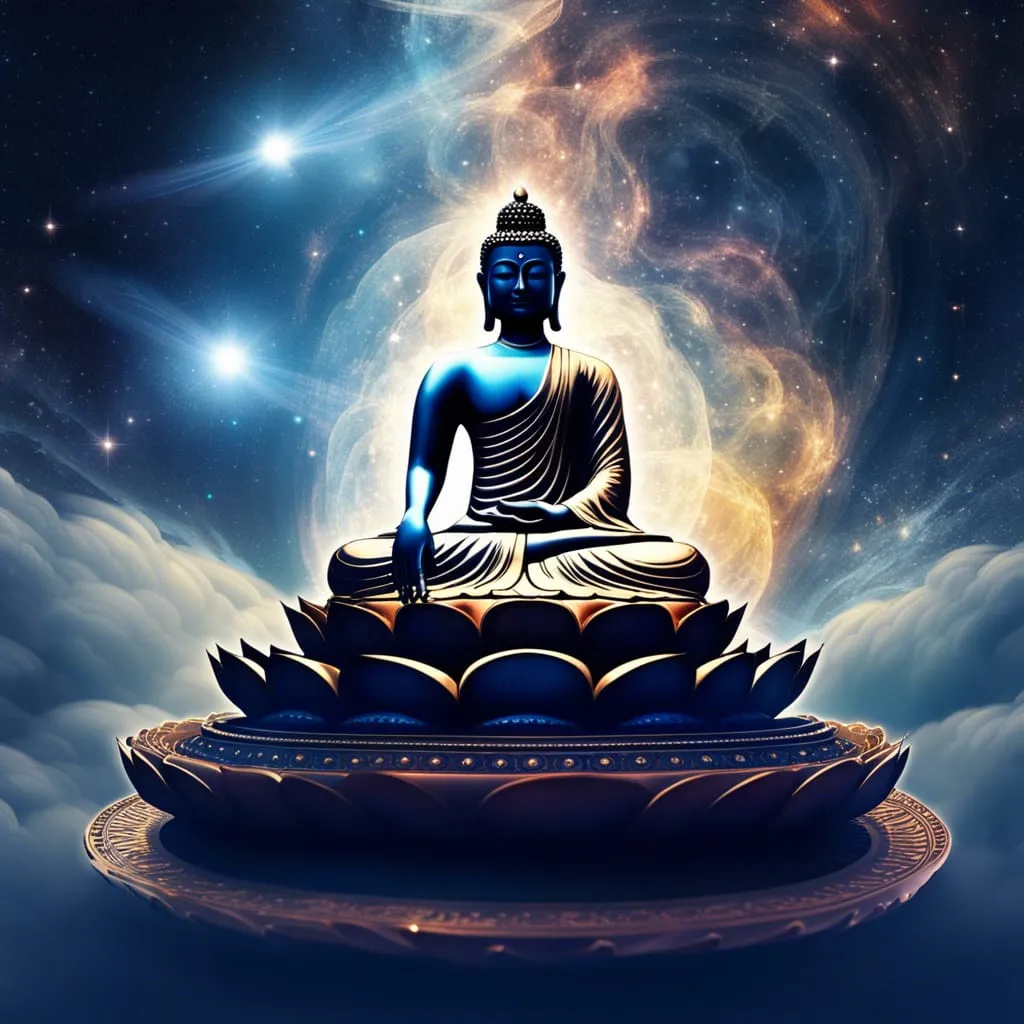
Buddhism is more than just a religion, it’s a philosophy of the mind that’s been offering profound insights since around 500BC—plenty of time for contemplating the mind! What I’d like to point towards today is desire from the Buddhist point of view. Buddhism has analysed desire to an extraordinary degree, going down the deep end through its insightful wisdom generating sub-categories of desire. It offers us a nuanced understanding of the complexities of human craving and its implications on our well-being. This… for lack of a better term, is a psychological categorisation that allows practitioners and those who’ve bothered to learn dharma to introspect and recognise the diverse ways in which desire manifests in their lives, shedding light on the root causes of suffering.
Without further ado we venture into the deeper meanings of desire and you’re going to learn a new word today! And that word is Tanha which encapsulates the meanings of “thirst, desire, longing, and greed”. The Buddha taught that desire is insatiable and ultimately leads to suffering because it is based on attachment to impermanent things.
Tanha is not just one kind of thing, but has three special meanings in Buddhism. As the Buddha said:
“There are these three cravings. Which three? Craving for sensuality, craving for becoming, craving for non-becoming. These are the three cravings.”
We see that Tanha comes in three kinds, but what are the definitions really? Here’s a great bullet pointed list that highlights the three key takeaways from Wikipedia:
- Kama-tanha (sense-craving): craving for sense objects which provide pleasant feeling, or craving for sensory pleasures.
- Bhava-tanha (craving to be): craving to be something, to unite with an experience. This includes craving to be solid and ongoing, to be a being that has a past and a future, and craving to prevail and dominate over others.
- Vibhava-tanha (craving not to be): craving to not experience the world, and to be nothing; a wish to be separated from painful feelings.
Now we are going to go through each kind of desire and showcase their relevance in modernity, helping us understand these concepts.
Kama-tanha (sense-craving):
Kama-tanha, or sense-craving, is particular something quite prevalent and manifests in myriad ways. From the addictive revisiting of social media notifications to the temptation of indulging in mass produced sugary snacks and fast food, we are constantly bombarded with opportunities for sensory pleasure and choices that would leave our ancestors flabbergasted. The convenience of online shopping and the promise of the latest gadgets fuel the flames of our desire for material possessions, driving us to seek fulfilment through the acquisition of more stuff. In a culture that glorifies instant gratification and constant stimulation, the pursuit of sensory pleasures has become a dominant force, shaping our behaviours and priorities.
Dhammapada Verse 186: “The craving of one given to heedless living grows like a creeper. Like the monkey seeking fruits in the forest, he leaps from life to life.”
As the mighty Buddha warned, this feverish pursuit often leads only to fleeting satisfaction and an insatiable craving for more without lasting satisfaction. Despite our technological advancements and material abundance, the wisdom of ancient teachings reminds us of the inherent dangers of becoming hooked in the web of sense-craving, urging us to seek fulfilment beyond the transient pleasures of the senses.
Bhava-tanha (craving to be):
If you aren’t familiarised with Bhava-tanha then you’ve been living under a rock. This type of desire—the craving to be—permeates our everyday waking life especially in the individualistic dog fights of modern times. Bhava-tanha is the drive of ego enhancement, based on a sense of dissatisfaction with one’s current self-identity or situation. To be good enough people engage in the pursuit of wealth, fame, or power and that is often glorified, as people strive to establish themselves as influencers, entrepreneurs, or leaders in their respective fields. Yet, amidst this relentless pursuit of selfhood, the teachings of Buddhist philosophy offer us a sobering reminder of the impermanence of such identities. The rise and fall of celebrities, the fleeting nature of trends, and the inevitable changes in societal norms all attest to the transience of worldly success.
Vibhava-tanha (craving not to be):
We live in a world that will never fail to disappoint us and there are many things we wish to avoid, people, health conditions, circumstances and relationship status. Enter Vibhava-tanha or craving not to be. This is our aversive desires of wishing to get rid of something and have nothing to do with it. In today’s fast-paced and often stressful world, the craving not to be, or Vibhava-tanha, finds its modern expression in various forms of escapism. From excessive binge-watching of TV shows or movies to numbing oneself with alcohol or drugs, many seek temporary relief from the burdens of life’s challenges. Social media offers a digital escape where we can bury our heads in our phones or computer screens, where individuals can curate a facade of happiness and success, hiding their inner turmoil and seeking validation in likes and comments. If we develop cancer or diabetes or whatever, we rightly take action in seeking out treatment. However, we may also develop the Vibhava-tanha and postpone our happiness longing to be rid of the condition(s). As the Buddha cautioned, this pursuit of annihilation only leads to deeper suffering, as it denies the interconnectedness of all experiences and distances us from the way things work in the sensory world.
The bottom line
Instead of craving pleasure, wanting to be more or fleeing from pain, Buddhist philosophy encourages us to confront our struggles with mindfulness and compassion, finding meaning and beauty even in the midst of adversity. All phenomena is unsatisfactory, it’s impermanent and not self (anatta). When the unpleasant conditions arise, they are what they are. We can reflect by changing out attitude. Allow them to be what they are because they cease all on their own. When you resist something, when you try to get rid of it, through wilful acts and intention—that’s attachment!
The stronger we crave thirst, desire, longing and greed for something, the more opportunities for dissatisfaction and frustration there is to arise. The sensory world is what we like and what we don’t like. What we see, hear, smell, taste and touch—what we think does not hold still but transforms from pleasant to unpleasant, from beautiful to ugly, to right to wrong—like a game of musical chairs. The nature of reality is to change in accordance with conditions.


I just started read these philosophies and I am searching a way to make the best of a situation. Your view was eye opening and I enjoyed reading it.